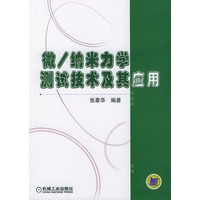245 resultados para SPAN
Resumo:
对强激波作用下双原子分子振动与离解耦合的非平衡离解过程进行了理论计算.本工作的特点是将计算起点建立在分子基本参数上,采用主方程理论处理振动与离解的耦合,振动跃迁几率用SSH理论计算,在离解限附近考虑多量子数跃迁并计及原子复合的影响.对O2-Ar体系,计算给出了在正激波后O2分子振动能级分布、振动弛豫时间、离解孕育时间、离解产物浓度、离解速率系数等物理量随时间的演化.计算结果分别与Camac和Wray的实验相符.计算显示,在激波作用的后期,有准稳态的振动能级布居分布.计算结果显示,Park模型低估了非平衡离解速率系数,Hansen模型则高估了非平衡离解速率系数.
Resumo:
<span style="color: rgb(0, 0, 0); font-family: 'Microsoft Yahei', 宋体, Arial, ' Helvetica', ' sans-serif'; font-size: 13px; line-height: 22px;">在钱学森先生的倡导下,中国科学院力学研究所自20世纪50年代末期就开始了高温气体动力学的基础研究,相关研究进展曾经为发展我国“两弹一星”和神州飞船做出了重要贡献.在钱学森先生创立的气动研究队伍和科研积累的基础上,中国科学院于1994年组建了中国科学院高温气体动力学重点实验室.span>
Resumo:
二十世纪八十年代,当比利时冶金研究中心(CRM)开发出CO_2激光毛化冷轧辊技术后,尝试用YAG激光进行轧辊毛化一直吸引着众多的研究者,这是因为YAG(1.06μm)激光波长比CO_2(10.6μm)激光波长短一个量级,材料对YAG激光有更高的吸收率,并用YAG激光可以聚焦到更小的光斑尺寸,同时使用电信号驱动的声光开关技术便于对毛化分布进行可设定控制。但是用传统声光调制的YAG激光虽然可以碇以很高的脉冲频率(>30kHz),但单脉冲有量仅为10mJ左右,难以达到辊面毛化粗糙度的要求,因此人们认为YAG激光用于毛化的主要困难是脉冲能量太小。
Resumo:
基于频谱的概念,考虑列车行车的水平载荷的性质以及桥梁自振特性,通过理论分析以及实际的测试数据,得到32 m跨度的简支混凝土桥梁在行车时的振动情况,对结果进行了详细分析。提出32 m跨度桥梁的横向振动主要由桥墩的自振特性控制。最后,就避免铁路桥梁行车时的共振现象进行了初步分析,提出了可行的解决方案。
Resumo:
为研究气相扩散速率对溶菌酶晶体生长的影响,特设计了一种可方便调节气相扩散速率的晶体生长样品池,并用动态光散射法对不同气相扩散速率下晶体生长过程进行了研究.实验结果表明,随着气相扩散速率的增加,晶体生长过程中的成核阶段缩短.气相扩散速率通过影响溶菌酶溶液形成过饱和的速率来影响生长出的晶体的数量和大小.
Resumo:
Resumo:
The Influence of Viscosity and Surface Tension on Atomization of Water/Methanol and Diesel Emulsions
Resumo:
This paper shows the result of experimental studies of the influence of viscosities, surface tensions on atomization characteristics of water/methanol and diesel emulsions. Three emulsifying agents Y01, Y02 and Y03, with viscosity of 1.32 ~ 1.5 Pa·s and HLB values of 5.36, 4.83 and 4.51 respectively was produced by Span 80 and Tween 60. In the W/O emulsions, the aqueous phase is between 10% and 50%; the agent concentration added is 0.8 ~ 8.0%. The viscosity of the emulsions is 0.003 ~ 0.02 Pa·s, and the surface tension is 0.04 ~ 0.1 N/m. The types and concentrations of agents and the aqueous phase ( < 50%) significantly influence the viscosity of the emulsions and the Sauter Mean Diameter, measured by Malvern Particle Analyzer SERIES 2600.
Resumo:
For better understanding the mechanism of the occurrence of pipeline span for a pipeline with initial embedment, physical and numerical methods are adopted in this study. Experimental observations show that there often exist three characteristic phases in the process of the partially embedded pipeline being suspended: (a) local scour around pipe; (b) onset of soil erosion beneath pipe; and (c) complete suspension of pipe. The effects of local scour on the onset of soil erosion beneath the pipe are much less than those of soil seepage failure induced by the pressure drop. Based on the above observations and analyses, the mechanism of the occurrence of pipeline spanning is analyzed numerically in view of soil seepage failure. In the numerical analyses, the current-induced pressure along the soil surface in the vicinity of the pipe (i.e. the pressure drop) is firstly obtained by solving the N-S equations, thereafter the seepage flow in the soil is calculated with the obtained pressure drop as the boundary conditions along the soil surface. Numerical results indicate that the seepage failure (or piping) may occur at the exit of the seepage path when the pressure gradient gets larger than the critical value. The numerical treatment provides a practical tool for evaluating the potentials for the occurrence of pipe span due to the soil seepage failure.
Resumo:
Resumo:
 本书系统地介绍了微/纳米力学测试技术中最常用压入和划入技术及其典型应用。
本书系统地介绍了微/纳米力学测试技术中最常用压入和划入技术及其典型应用。
全书共分13章。测量技术方面,内容涉及接触力学,测试原理、方法、校准、仪器、
力学参量、影响因素。典型应用方面,内容涉及在表面工程、微机电系统、生物、高
聚物和金属玻璃等领域内的微/纳米力学行为的测试。
本书可供力学、材料、物理、电子、机械、生物和化学等领域的研究人员、工程技术人员以及大专院校相关专业的师生参考。
<span>
目录
前言
第1章 绪论
1.1 硬度的定义和分类
1.2 纳米压入和划入技术的发展
1.3 纳米压入和划入技术的特点
参考文献
第2章 压入接触力学
2.1 弹性接触
2.2 弹塑性接触
参考文献
第3章 纳米压入测试原理
3.1 压入硬度和模量
3.2 连续刚度测量
3.3 载荷-深度数据确定的材料参数
参考文献
第4章 纳米压入测试方法
4.1 压针类型
4.2 测试环节
参考文献
第5章 纳米压入的确认和校准
5.1 直接确认和校准
5.2 间接校准
5.3 测试 和校准的实例
参考文献
第6章 纳米压入和划入的测量仪器
6.1 仪器技术指标的定义
6.2 美国MTS公司
6.3 美国Gysitron公司
6.4 瑞士CSM公司
6.5 英国MML公司
6.6 澳大利亚CSIRO公司
6.7 测量仪器的发展趋势
参考文献
第7章 力学参量的测量
7.1 压入方式
7.2 划入方式
7.3 弯曲方式
7.4 吸引方式
7.5 声发射测试
7.6 温度测试
参考文献
第8章 影响纳米压入测试的因素
8.1 测试仪器的影响
8.2 样品的表面状态和性质
8.3 纳米压入和划入测试所面临的问题
参考文献
第9章 在表面工程中的应用
第10章 在微机电系统中的应用
第11章 在生物及其相关材料
第12章 在高聚物中的应用
第13章 在金属玻璃中的应用
附录
Resumo:
Resumo:
Resumo:
<span>目录span>
Resumo:
 本书为祝贺郑哲敏先生八十华诞的学术报告会的文集,其中收录邀请报告12篇,定向征文58篇。这些论文涉及爆炸力学、岩土力学、冲击力学、材料力学性能、生物力学、物理力学、海洋工程力学、环境流体力学等几大方面,绝大多数为论文作者科研项目的最新成果。
本书为祝贺郑哲敏先生八十华诞的学术报告会的文集,其中收录邀请报告12篇,定向征文58篇。这些论文涉及爆炸力学、岩土力学、冲击力学、材料力学性能、生物力学、物理力学、海洋工程力学、环境流体力学等几大方面,绝大多数为论文作者科研项目的最新成果。
| 会议论文 |
|
|
序 | <span class="font_gray_12">洪友士;span> | |||||
|
|
内禀Deborah数在破坏现象中的意义 | <span class="font_gray_12">白以龙;汪海英;span> | |||||
|
|
爆炸波在混凝土夹层结构中传播特性分析 | <span class="font_gray_12">段祝平;span> | |||||
|
|
海洋内波与海洋工程 | <span class="font_gray_12">李家春;程友良;范平;span> | |||||
|
|
郑哲敏先生为推动我国力学和技术科学发展所作的贡献 | <span class="font_gray_12">谈庆明;span> | |||||
|
|
开发深海资源的海底空间站技术 | <span class="font_gray_12">曾恒一;span> | |||||
|
|
微系统动力学研究的一些新进展 | <span class="font_gray_12">赵亚溥;span> | |||||
|
|
爆炸近区空气冲击波规则反射和非规则反射 | <span class="font_gray_12">周丰峻;陈叶青;任辉启;span> | |||||
|
|
椭圆函数的精细积分算法 | <span class="font_gray_12">钟万勰;姚征;span> | |||||
|
|
量子蒙特卡罗法的研究 | <span class="font_gray_12">孙祉伟;span> | |||||
|
|
拟Hamilton系统随机平均法在活性布朗粒子动力学研究中的应用 | <span class="font_gray_12">朱位秋;邓茂林;span> | |||||
|
|
二个二阶张量的各向同性标量函数的广义坐标 | <span class="font_gray_12">王文标;段祝平;span> | |||||
|
|
弹性杆轴向碰撞波动问题理论分析 | <span class="font_gray_12">马炜;刘才山;黄琳;span> | |||||
|
|
两个可变形结构的相互碰撞——模型与验证 | <span class="font_gray_12">余同希;阮海辉;span> | |||||
|
|
结构动力计算中自由度减缩方法概述 | <span class="font_gray_12">刘彬;丁桦;梁乃刚;span> | |||||
|
|
弹塑性系统动力行为探讨 | <span class="font_gray_12">杨桂通;span> | |||||
|
|
SINGULARITY THEORY ON BUCKLING OF COMPRESSIBLE ELASTIC SLENDER RODS | <span class="font_gray_12">张义同;谢宇新;span> | |||||
|
|
GCr15钢超高周疲劳断口观察与裂纹起源分析 | <span class="font_gray_12">周承恩;洪友士;span> | |||||
|
|
纳米尺度毛细作用学——纳米物理力学的新领域 | <span class="font_gray_12">朱如曾;span> | |||||
|
|
METALLIC CELLULAR SOLIDS UNDER IMPACT LOADING | <span class="font_gray_12">H.Zhao;S.Abdennadher;I.Elnasri;span> |

